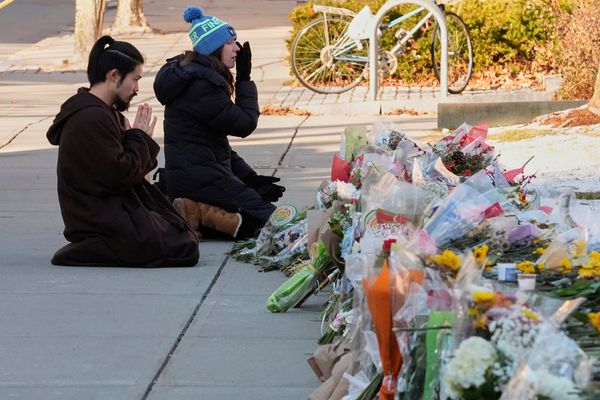
It is disturbingly easy to shut down a commercial airport, as last night’s events in Copenhagen show. Three large drones, Danish authorities said, flew close enough to the runway to force the airport to close for four hours in an incident that inevitably raises wider questions about the security of the skies above Nato countries at a time when Russia has already shown it is willing to test the integrity of alliance airspace.
Videos published by local media show what appears to be relatively large but unidentified craft with green lights near the Danish capital. The drones came in from multiple directions and left in a similar fashion, suggesting, Danish police said, they were operated by a “capable actor”, one with an understanding of how to pilot drones in such a way as to maximise nuisance and cause alarm.
Bob Tollast, a research fellow at the Royal United Services Institute thinktank, said it was “another reminder of how vulnerable airports are”. It was not possible, he added, to jam frequencies “due to nearby civilian use of the electromagnetic spectrum, for radio communications, cell phones and the like” – while shooting down unidentified craft is an unrealistic option near heavily populated areas.
If a Russian link is proved, it would be a significant moment for Nato, which is already on a heightened state of alert. It is two weeks after 19 Russian decoy drones crossed the border into Poland, an incident which has been followed by further incursions into Romania and – in case Europe had not got the message – a 12-minute flight into Estonian airspace by three Russian MiG-31 jets over the Baltic Sea on Friday.
The Polish incident alone was enough to prompt Nato to set up Operation Eastern Sentry, enhanced air policing over eastern Europe, with extra jets supplied by the UK, France, Germany and Denmark. But Copenhagen is about 300 miles from the nearest Russian territory, the exclave of Kaliningrad, and is not a location that Moscow was expected to target successfully.
At the same time, it is a reminder how far new and relatively inexpensive Russian drones can reach. Russian Gerberas, the $10,000 decoy drones that flew into Poland, are generally considered to have a maximum range of about 370 miles (enough to reach Copenhagen from Kaliningrad). The better-known $75,000 Shaheds can reach further, probably more than 1,000 miles, depending on the exact configuration.
There is also speculation the drones that approached Copenhagen airport were launched from a ship in the Baltic. Though so far unproven, it is theoretically possible, and would have given Denmark little time to react.
Even if there is no Russian link to the Copenhagen incident, the sudden boldness of the Kremlin in Poland and Estonia is new territory for Nato. The US president, Donald Trump, seems little interested in the string of incidents, making no reference to subject in his rambling speech at the UN on Tuesday – and it is European allies that have already been forced to step up air defences with extra fighter jets.
Earlier on Tuesday, Denmark’s prime minister, Mette Frederiksen, also made a tentative link between the overnight drone flights and the hacking episode that has led to flights being disrupted in Brussels, Berlin and Heathrow airports since Friday.
A ransomware attack – which usually originates in Russia – knocked out automated check-in systems provided by Collins Aerospace and forced the cancellation of dozens of flights. Though a Russian link cannot be confirmed in this case yet, the possibility has to be considered.
Some experts, such as the former White House adviser Fiona Hill, have emphasised that while the west does not consider itself at war with Russia, Moscow has a different view. Its main focus remains the invasion of Ukraine, but from a Kremlin perspective it may be rational to try to impose greater costs on Europe, which is increasingly becoming Kyiv’s principal backer as the US pulls back.
While there appears to be no intent to cause casualties, the recent incidents are an expensive nuisance and have already forced European Nato members to increase their active military deployment. Though Nato, meeting on Tuesday, said the alliance would use “all necessary military and non-military tools to defend ourselves”, it is not yet obvious that Russia has been deterred.







